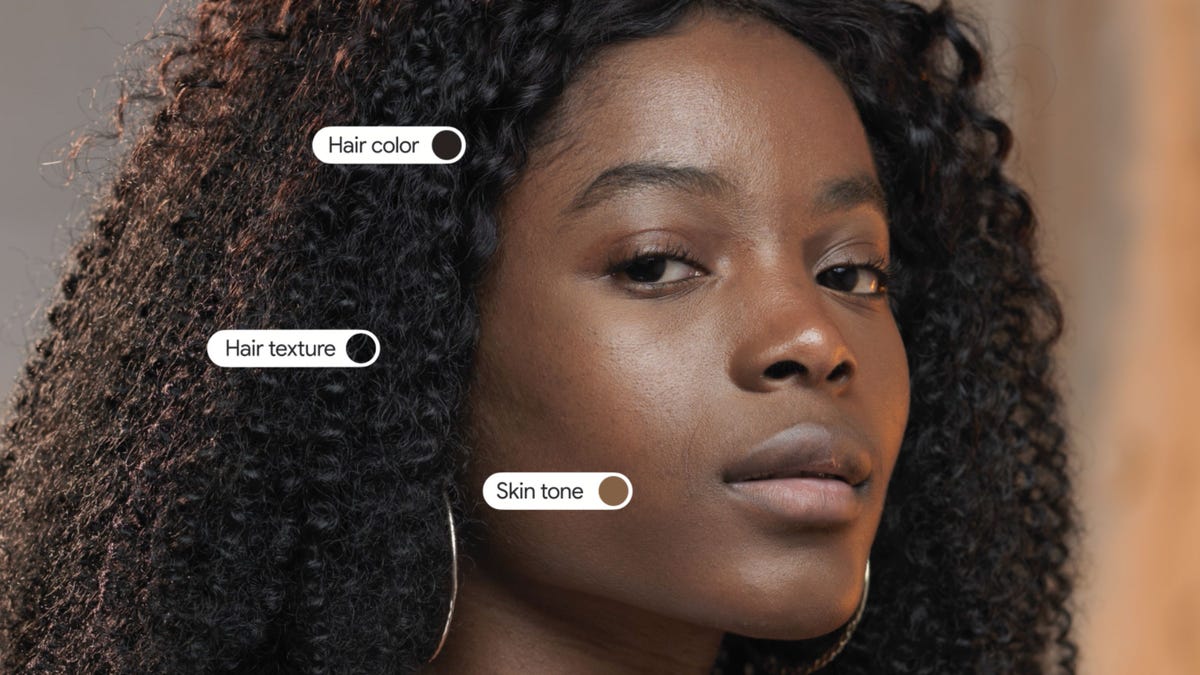Google Adopts 10-Step Skin Tone Scale So Its AI Understands Diversity
To start, you'll notice the Monk Skin Tone Scale in beauty-related searches, but Google is also building it deeply into its AI infrastructure.

Google is adopting the 10-tone Monk Skin Tone Scale to try to better handle the range of human colors and hopes others will annotate their photos on the web using the scale.
Google has adopted a 10-grade scale to help it better judge and present skin tones, a change that highlights the tech giant's efforts to better reflect the range of people who use Google Photos, search and other products.
Over the past two years, Google has been moving to the Monk Skin Tone Scale from Harvard associate professor Ellis Monk, said Tulsee Doshi, the product leader for Google's Responsible AI team. It's replacing the six-tone Fitzpatrick Scale, which doesn't reflect real people well enough, she said.
"We ran a study across thousands of participants in the United States, trying to better understand how well the scale represented their skin tones," Doshi said. "Participants in the US found that this scale significantly better represented their skin tone than the Fitzpatrick scale."
The first results will appear publicly this week in the US. When you search on Google for beauty-related information, you'll see small photos of colors and faces that let you refine the search results by skin tones.
Monk supported Google's work, including its sharing Monk Skin Tone Scale data under a Creative Commons license so others can use it as well. "My hope is that given Google's embrace of the scale, and that we've open-sourced it, other tech companies will find it easy to adopt the scale," Monk said in an email.
The Monk Skin Tone Scale
The adoption of the new scale, which Google announced Wednesday at its Google I/O developer conference, is part of a broader effort by Google and other technology companies to better reflect human diversity. Silicon Valley has been the target of many critics who say it's too insular and focuses narrowly on the needs and desires of white people, who make up the bulk of its executives and many of its engineers.
Artificial intelligence is often singled out for criticism. Among the concerns is that the AI technology spreading across the computing industry may reflect biases in the data used to train it. In 2015, Google AI categorized a Black person as a gorilla, an incident that has become an infamous cautionary tale. Using the Monk Skin Tone Scale to evaluate how well products work with different people is designed to prevent such embarrassments.
Google's AI team also struggled with a 2020 scandal involving Timnit Gebru, a prominent Black AI ethicist who said she was fired over a dispute over a research paper examining AI and natural language processing. Two months later, Google fired Margaret Mitchell, who co-led the Ethical AI team, for reportedly using automated software to scan messages for evidence of discrimination against Gebru.
See also
Google Chief Executive Sundar Pichai apologized for the situation, and AI research leader Jeff Dean said it hurt Google's reputation.
The AI team's problems extended to March, when Google fired Satrajit Chatterjee, a researcher who challenged a high-profile Google paper that used AI to help design computer chips.
AI also can be used to help with issues of race and skin color. In 2021, Google updated its Pixel phones' camera, adapting its AI-based image processing to improve how it captures a range of skin tones.
At Google I/O, the company detailed another photography change due to arrive in coming weeks. Google Photos will get a new range of photo filters, editing effects designed to "make beautiful, accurate depictions of communities of color," Doshi said.
Google hopes others will evaluate and embrace the new skin tone scale. For example, others can use the new system to update metadata labels for their own photos on the web so Google's search engine can recognize them better, Doshi said.
Trying to improve AI is an important part of the scale's design, Monk said. In addition to trying to find a set of tones that represented the most common skin tones, he wanted a scale that everyday people and researchers could apply.
"In the context of machine learning, for example, annotators label training data," Monk said. "They need a scale they can use reliably and consistently."
To help such work, Google also released numeric color data for the Monk Skin Tone Scale to aid computer processing. It'll publish its research on the subject for evaluation and discussion.
The Fitzpatrick scale, originally developed for dermatology work, didn't have the necessary color range for all people. The Monk Skin Tone Scale does but is still simple enough to apply easily, for example when humans are annotating photos that Google uses to train its AI systems, Doshi says.
"We want ... a scale that actually reflects and represents the diversity of communities that we have across the globe and that have been historically affected by colorism," Doshi said.
Google's testing and use of the Monk Skin Tone Scale has begun in the US but will spread around the globe. And Monk said he'll be working on new research to validate the scale in other parts of the world besides the US.

